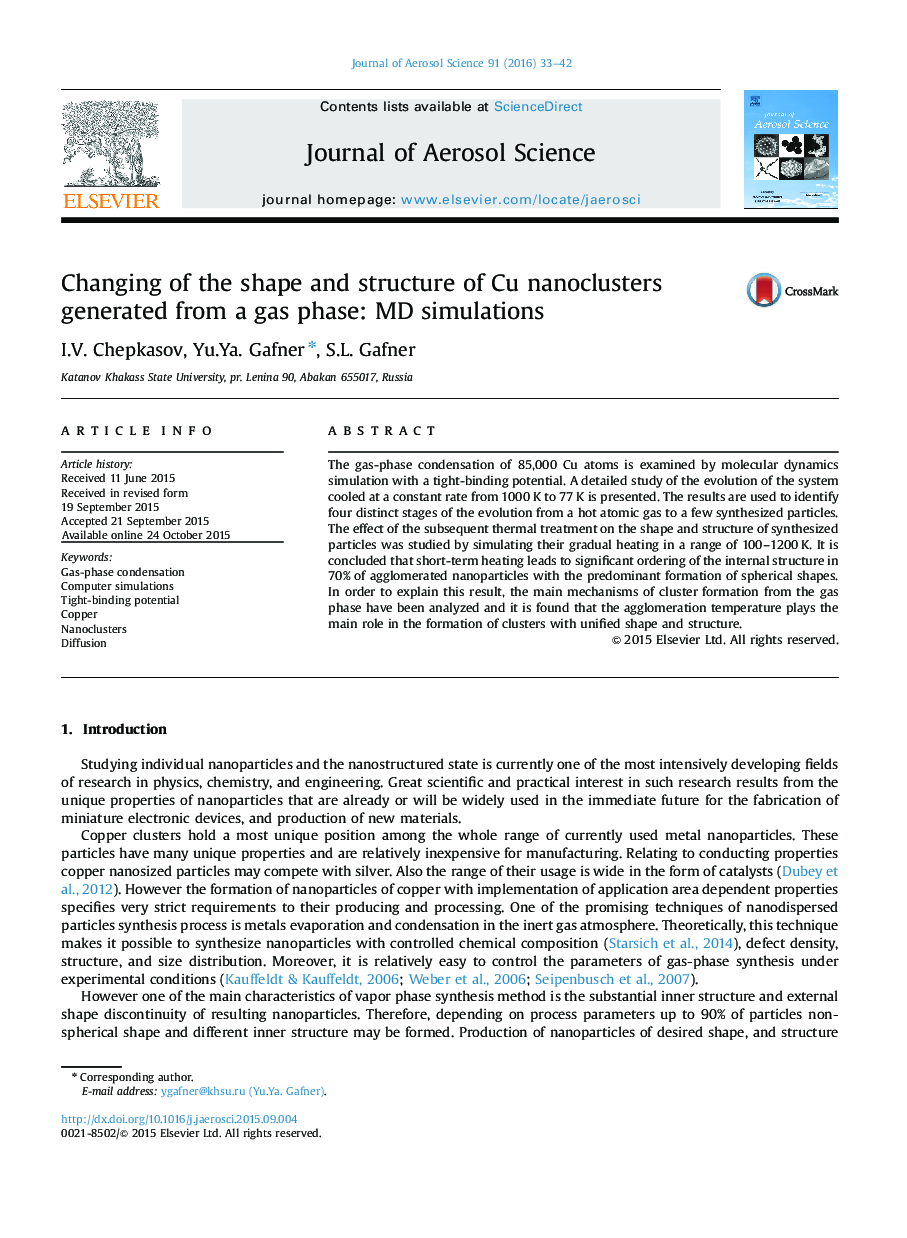| Article ID | Journal | Published Year | Pages | File Type |
|---|---|---|---|---|
| 4452223 | Journal of Aerosol Science | 2016 | 10 Pages |
•The gas-phase condensation of Cu atoms is examined by molecular dynamics simulation.•The results are used to identify four distinct stages of nanoparticles evolution.•The effect of thermal treatment was studied in a range of 100–1200 K.
The gas-phase condensation of 85,000 Cu atoms is examined by molecular dynamics simulation with a tight-binding potential. A detailed study of the evolution of the system cooled at a constant rate from 1000 K to 77 K is presented. The results are used to identify four distinct stages of the evolution from a hot atomic gas to a few synthesized particles. The effect of the subsequent thermal treatment on the shape and structure of synthesized particles was studied by simulating their gradual heating in a range of 100–1200 K. It is concluded that short-term heating leads to significant ordering of the internal structure in 70% of agglomerated nanoparticles with the predominant formation of spherical shapes. In order to explain this result, the main mechanisms of cluster formation from the gas phase have been analyzed and it is found that the agglomeration temperature plays the main role in the formation of clusters with unified shape and structure.
Graphical abstractFigure optionsDownload full-size imageDownload high-quality image (714 K)Download as PowerPoint slide
